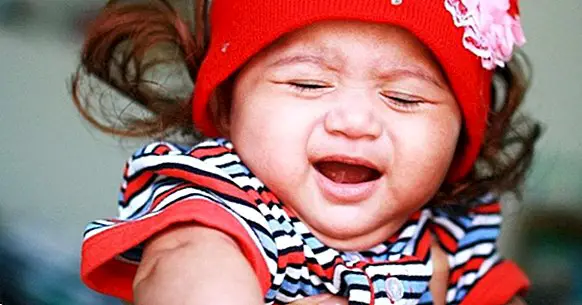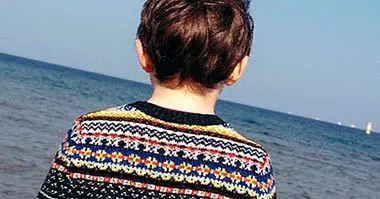The 4 types of crying babies and their functions
Although crying is a human function that is maintained throughout life, it has a much greater importance during early childhood; Until they develop more complex behavioral patterns, such as gestures and language, crying is the spontaneous way in which babies transmit their needs to adults.
In this article we will describe the functions of crying focusing on the 4 main types described by Peter H. Wolff: hunger, anger, pain and attention or frustration. Each one has a different presentation pattern, although anger is a variant of hunger and attention or frustration is not always taken into account.
- Related article: "Types of temperament in babies: easy, difficult and slow"
Crying functions in babies
Crying is the main communication mode of babies . The little ones respond to their bodily states of discomfort through the movements, sounds and physiological reactions that make up this phenomenon; Although there is no communicative intentionality, adults respond naturally when they see or hear a crying baby.
In particular, scientific research has shown that mothers have similar responses to anxiety or stress When your babies cry: the heart rate accelerates and skin conductance increases as a result of increased secretion of sweat.
- You may be interested: "How do I get my baby to fall asleep? Guidelines and advice"
Theoretical perspectives
From the evolutionary perspective we understand crying as an adaptation of the human species to life in society. Throughout history our organism has adapted to express crying and to respond when it occurs in others. In babies, crying would have been especially effective in facilitating survival by promoting help.
T. Berry Brazelton, author of the well-known Neonatal Behavioral Assessment Scale, hypothesized that crying has as its general function the emotional discharge when the baby is subjected to environmental overstimulation. It would be, therefore, a way to maintain homeostasis in the nervous system.
Aletha Solter, an evolutionary psychologist who studied with Jean Piaget, said that Crying can be beneficial to release tension when it is not due to hunger, pain or other easily identifiable causes. Solter, like other experts, said that the best way to handle crying babies is to hold them and let them end naturally.
- Related article: "What is the use of crying for?"
The 4 types of crying
Through his clinical observations Peter H. Wolff identified four basic types of crying in infants and young children. In addition to its functions, these types of crying differ in their physical characteristics , so it is usually possible to discover what happens to the baby from the topography of the crying.
Of course, variations of each type can occur, and in fact it has been shown that parents more easily distinguish the cries of their own babies than those of others. This is associated with familiarity and the fact that the children imitate the timbre of their parents' voice, the main influence on their communicative development.
1. Hungry (basic)
The basic cry it's regular and rhythmic : first the baby utters a short cry, followed by a short pause in which an inspiration occurs; then the crying and the inspirations alternate. This type of crying usually appears in response to feelings of hunger.
2. Of anger
This type of crying is similar to hunger, although in this case the cries are more intense and abrupt because the amount of air that the baby expels is greater. In addition, the duration of crying periods compared to inspirations is longer than in the basic type.
3. Pain
The crying of pain moves away from the basic pattern. In this case the crying explosion it is not preceded by complaints , so that it is more sudden. On the other hand, after the crying the baby holds his breath, unlike what happens in the cry of hunger and anger.
According to research adults are ready to respond more quickly to the pain than the basic pain, which is logical considering that it is much more striking.
4. Attention or frustration
According to Wolff the crying to call attention or to express frustration begins to occur after the rest, from the third week of life. It is a more limited cry than the previous ones since it is constituted by the appearance of two or three whining . In this case, no containment of the breath is detected.
Many classifications on the types of crying do not include attention or frustration, although their distinctive characteristics make it relevant to separate them from the rest of types.



















